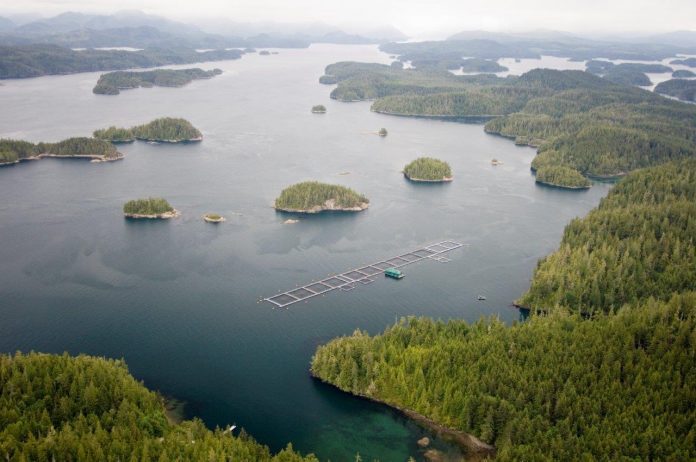But the first measure is to choose the right location for the sites.
Update: In a previous version of the article, Mowi told SalmonBusiness that the company used so-called “bubble curtains” in the fight against the algae. Later Wednesday, Mowi has informed that this is incorrect, and that they have stopped using bubble curtains.
“The fight against the algae has been part of the salmon farming in British Columbia (BC) for over 30 years. We are now in the season where harmful algae blooms are quite common here in BC. Blooms are really driven by weather conditions,” said communications manager Eivind Nævdal-Bolstad in Mowi to SalmonBusiness while he is traveling in Canada.
“Wet conditions followed by hot weather will have nutrient-rich waters provided with sunlight and heat can create an algae bloom,” explained Nævdal-Bolstad.

The first thing Mowi does to mitigate potential damage from algae is to find the right location for the sites.
“Our first mitigation action is proper siting. Some sites are more prone to harmful algae than others. It is very important to properly site a salmon farm. Coordinated monitoring is conducted between all companies in the area who all collaborate with the Harmful Algal Monitoring Program,” said Nævdal-Bolstad.
Upstream circulation of water
Like the fish farms of Grieg Seafood in BC, Mowi’s farms are equipped with water diffusers that use upwelling water and compressed air to create a circulation of water that prevents algae from entering.
“Diffusers use uplifting water and compressed air to create a circulation of water that prevents algae from entering the cage,” said Nævdal-Bolstad.
Tarpaulins
The second way Mowi mitigate against the algae is with tarpaulins. “They can form a hard barrier between the water in the pen and the sea water surrounding,” said Nævdal-Bolstad.
“We have also designed a number of measures to preserve fish and keep them safe when harmful algae are present in the water,” he continued.
Nævdal-Bolstad said that all of the mitigation methods listed above are successful from time to time, in different areas. “We have learned that harmful algae are a part of our environment in BC and something we must always be prepared for, have mitigation in place for, and respect,” said Nævdal-Bolstad.

